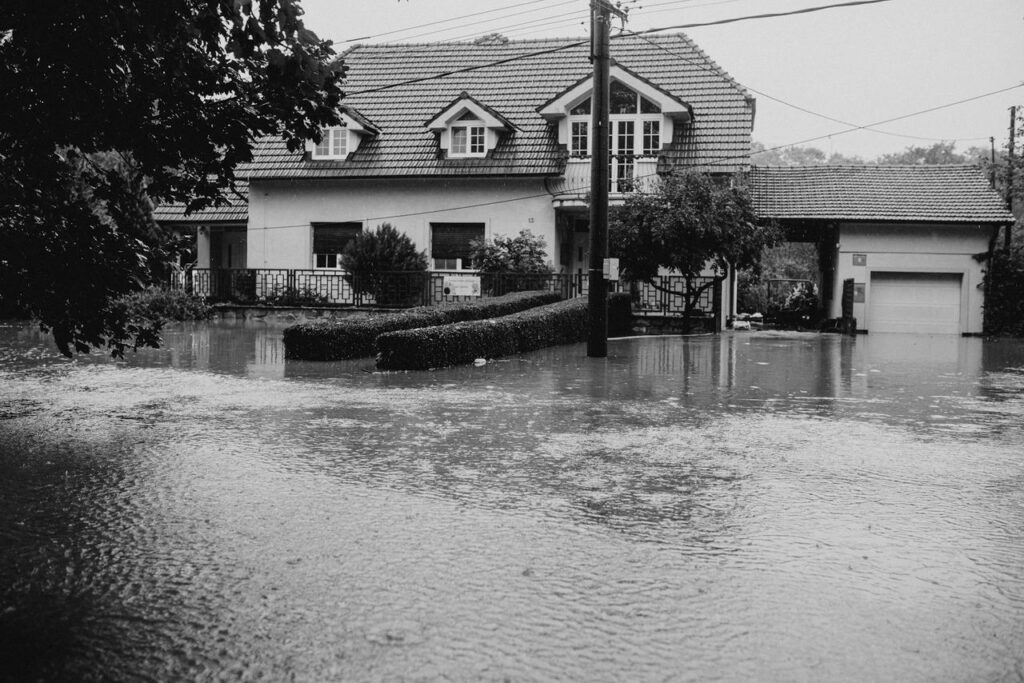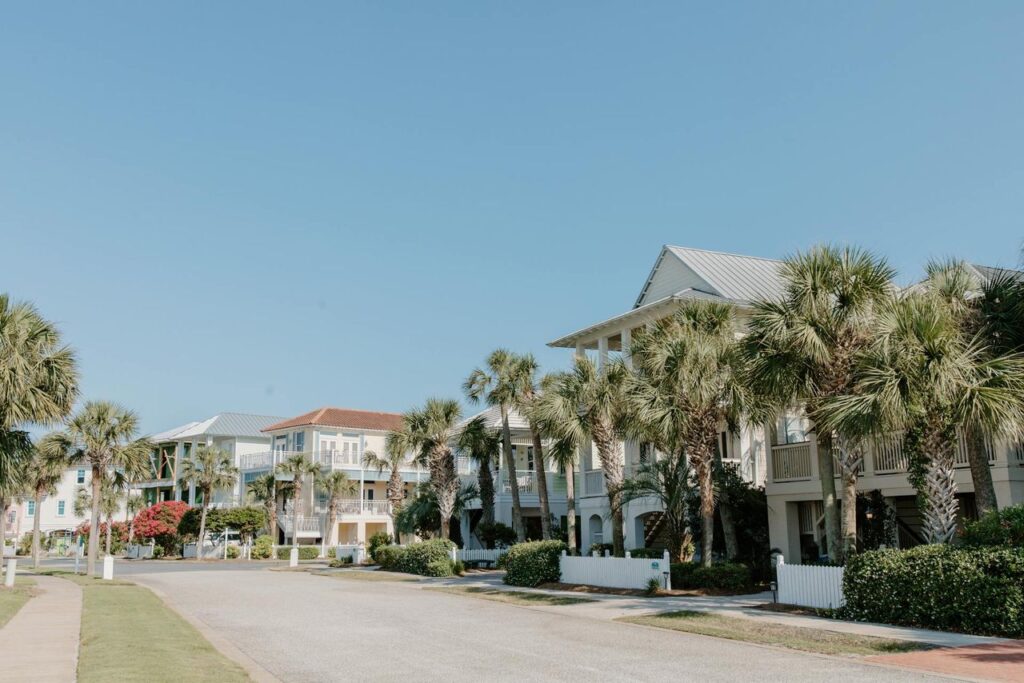If you’re planning to buy a home in Florida or California in 2025, insurance may be one of your biggest hurdles. Once an afterthought in the homebuying process, insurance is now front and center, reshaping affordability, lending, and investment strategies. Premiums are skyrocketing, coverage is harder to secure, and in some areas, insurers are pulling out altogether.
For buyers, this insurance crisis isn’t just an added expense, it’s a structural change in how real estate markets work. Understanding what’s driving it, how it impacts affordability, and how to protect yourself before signing a contract is essential.
Background: What’s Driving the Insurance Crisis?
The crisis in Florida and California didn’t appear overnight. It’s the result of overlapping pressures, from climate risks to insurer withdrawals.
Climate Change and Catastrophic Events
Both states sit at the frontline of climate risk. Florida faces frequent hurricanes and flooding, while California contends with devastating wildfires. According to FEMA, climate change has made these catastrophic events more frequent and severe, creating higher claims costs for insurers.
As insurers pay out billions in damages, they pass costs back to homeowners through premium hikes. In Florida, average annual premiums have crossed $6,000, more than three times the national average. In California, premiums in wildfire zones can exceed $5,000 and that’s if coverage is available at all.
Insurer Behavior and Market Retreat
Many large insurers have decided that the risks outweigh the profits. In 2023 and 2024, household names like State Farm and Allstate announced they would stop writing new policies in California, citing wildfire risk. In Florida, more than a dozen insurers have either gone bankrupt or pulled out of the state since 2021.
This exodus has forced buyers into state-backed “insurer of last resort” programs like Florida’s Citizens Property Insurance Corporation or California’s FAIR Plan. These programs provide coverage, but usually at higher costs and with fewer protections.

Legal, Fraud, and Litigation Pressures
Florida’s insurance market faces additional challenges from litigation. Lawsuits over roof claims, contractor fraud, and legal fee multipliers have driven up costs dramatically. The Insurance Information Institute estimates that while Florida accounts for only 9% of the nation’s homeowners’ insurance claims, it represents nearly 80% of its homeowners’ insurance lawsuits.
Despite reforms passed in 2023 and 2024, the impact on premiums is still unfolding. Buyers in 2025 should expect ongoing turbulence.
What This Means for Homebuyers and Investors in Florida & California
The insurance crisis has implications far beyond monthly bills. It affects financing, property values, and even long-term neighborhood trends.
Affordability and Financing Impact
For many buyers, the biggest shock is how much insurance adds to monthly housing costs. A home that seems affordable on the mortgage side may become out of reach once premiums are factored in. Lenders now scrutinize insurance quotes before approving loans, and some deals fall apart entirely when coverage can’t be secured.
This trend is especially relevant in markets like Miami, where affordability is already a challenge. As we discussed in our guide on Miami First-Time Home Buyer Programs (2025), down payment assistance may help with upfront costs, but high insurance premiums can still stretch budgets thin.
Risk of Nonrenewal or Cancellation
Even after purchase, buyers face the risk of insurers canceling or nonrenewing policies. In both states, insurers are tightening underwriting standards, and homes with older roofs, outdated wiring, or proximity to high-risk zones are often dropped. This unpredictability makes budgeting and long-term planning difficult for homeowners.
Neighborhood and Location Premiums
Insurance is becoming a key driver of neighborhood desirability. In Florida, homes further inland and at higher elevations are commanding more interest as buyers seek lower premiums and reduced flood risk. In California, properties outside designated wildfire hazard zones are attracting a premium.
This geographic shift is already influencing real estate markets and could accelerate through 2025.
Investment and Flip Risk
For investors, insurance costs are eating into margins. House flippers must account for higher carrying costs, while long-term investors are facing reduced cash flow as premiums rise. Rental property owners may try to pass these costs onto tenants, but affordability caps how far rents can go.
As we explored in How to Buy Foreclosed Homes in Miami, investors need to do more due diligence than ever. Insurance risk should now be a core part of any deal analysis.
Builder and Developer Implications
The crisis isn’t just affecting resale buyers. Builders and developers are struggling with higher insurance costs for construction and completed units. This could slow new construction, further tightening inventory in already constrained markets like Florida and California.
How to Protect Yourself When Buying in 2025
Despite the challenges, buyers can take steps to protect themselves.
Do Thorough Due Diligence Before Purchase
Before making an offer, get an insurance quote for the property. Don’t assume coverage will be available or affordable. Pay special attention to the home’s age, roof condition, elevation certificate (in Florida), or wildfire zone designation (in California).
Negotiate Protections in Your Purchase Contract
Buyers should negotiate insurance contingencies into contracts, allowing them to walk away if affordable coverage can’t be secured. In high-risk states, this clause is becoming as important as financing contingencies.
Design and Mitigation Steps
Homes with hurricane shutters, impact-resistant windows, fire-resistant roofing, and defensible landscaping are more insurable and may qualify for discounts. In some cases, upgrading a roof or electrical system can make the difference between coverage denial and approval.
Choose a Strong Insurer with Reinsurance Support
When comparing insurers, look beyond the premium. Companies with strong reinsurance backing are less likely to face insolvency after major disasters. State-backed plans may provide stability, but coverage gaps should be understood.
Plan for Future Increases
Even if you secure an affordable premium in 2025, expect increases in the years ahead. Build these into your long-term budget and stress-test your finances against worst-case scenarios.

What to Monitor Moving Forward (2025 and Beyond)
Several factors could influence how the insurance crisis evolves:
- The pace of climate change and catastrophic events.
- State-level legislative reforms, particularly in Florida’s litigation environment.
- Expansion or contraction of state-backed insurance programs.
- Federal involvement, such as disaster relief or reinsurance backstops.
Buyers should stay informed through reliable sources like CNBC, Insurance Information Institute, and state government updates.
Conclusion
The insurance crisis in 2025 is reshaping real estate markets in Florida and California in profound ways. Rising premiums, shrinking coverage options, and insurer exits are making affordability and due diligence critical considerations for buyers.
For homebuyers, the key is preparation. Factor insurance into your affordability calculations, secure quotes early, and work with professionals who understand the shifting landscape. For investors, insurance risk is now as important as location, financing, and rental demand.
While the challenges are significant, informed buyers can still succeed in these markets. By approaching the process strategically and planning for ongoing change you can protect yourself and make smarter real estate decisions in Florida and California.


